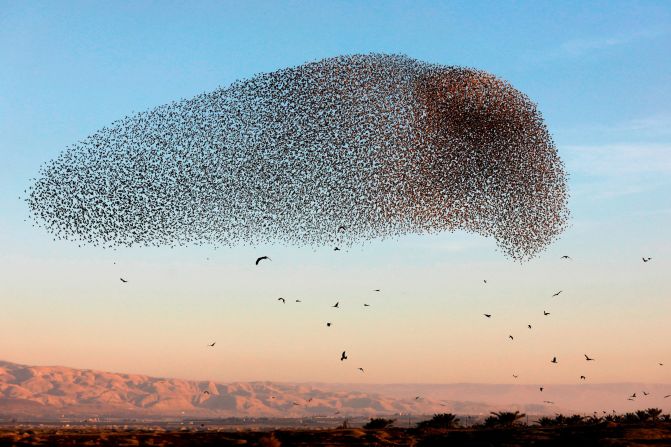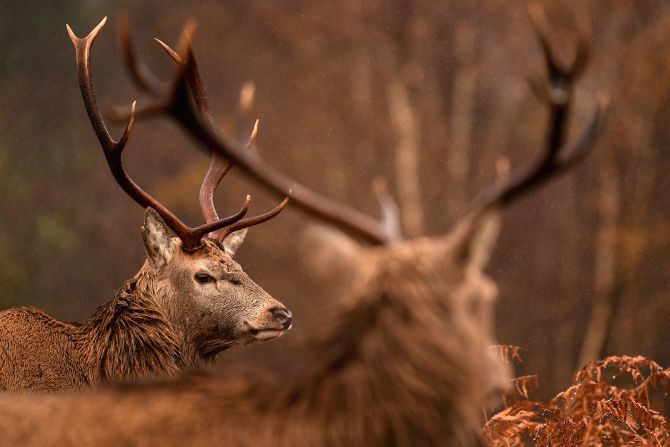
Chinese mitten crab -- The Chinese mitten crab invaded Europe and North America from its native region of Asia. Its omnivorous feeding habits significantly reduce the populations of native aquatic invertebrates and plants and it erodes river banks through its burrowing. The crab also damages fisheries and aquaculture by consuming bait and trapped fish, as well as by damaging gear. It is classified as one of the world's worst invasive alien species. Scroll through the gallery to see more of the planet's most problematic invasive species.

Big-headed ant -- The big-headed ant first spread from southern Africa via ships in the 18th century. It is now found in both tropical and temperate regions, from Japan to Puerto Rico. The ants chew through electric wires as well as seeds, aphid honeydew, and other insects. As they graze, the ants can spread viruses among crops. Native spiders and weaver ants also struggle when this species infests new land.

Warty comb jelly -- The humble comb jelly has no brain, stomach or bones. It eats microscopic sea organisms, as well as fish eggs and larvae. Native to the Atlantic coasts of North and South America, warty comb jellies reached the Black Sea, Aegean Sea and Caspian Sea during the 1980s, traveling across oceans in the ballast water of ships. In these new waters, they flourished thanks to a lack of natural predators and have been associated with crashes in fish numbers. Dolphin populations, dependent on fish supplies, plummeted in the Black and Azov Seas as a result of the jelly invasion, according to the World Wildlife Fund.

Stoat -- Related to weasels, polecats and ferrets, the stoat is a small but ferocious predator. Stoats have no qualms about attacking larger animals, including rabbits and chickens. European settlers took stoats to New Zealand for pest control purposes, where they wreaked havoc on native bird populations. The New Zealand Government spends millions of dollars each year protecting native birds from stoats, which feast on their chicks and eggs.

Asian Longhorn beetle -- Trees where these beetles lay their eggs are doomed to a slow death, as larvae gnaw away at their bark from the inside. Native to Asian countries including China and Japan, this species has reached Europe and North America, mostly through wooden packaging. They have already infested many poplar plantations in China, and have also been found in chestnut trees, willows and elms. The US Department of Agriculture has warned that the insects could devastate American timber industries and forests if left unchecked.

Common prickly pear -- Originally from the Americas, this cactus is an invasive species in South Africa, Kenya and Australia. It grows in bristly thickets up to two meters high, and was often introduced to contain livestock. It is highly drought resistant and frost resistant, and can spread across millions of hectares of land. During an infamous spell dubbed "the green hell" in Australia in the 1920s, the cacti spread so rapidly and thickly across rural plains that people abandoned their homes and farms. The plants were tamed when authorities introduced a foreign cactus-eating insect, the cactoblastis moth, in 1925.

European Starling -- Sixty of these birds were set free in New York in 1890, and European starlings were also deliberately introduced to regions of Australasia and South Africa to control native insect populations. Today, between 100 million and 200 million common starlings on six continents destroy many crops, and out-compete birds like woodpeckers in the United States and black cockatoos in Australia. However, their numbers appear to have fallen in recent decades, possibly due to intensive farming techniques.

Giant African land snail -- Its native range is coastal East Africa, but this snail has reached all continents except Antarctica. These snails are sold as food, pets, and for medicinal purposes, which led to their accidental introduction to the wild. In New Zealand, the Giant African land snail eats many types of local snails, as well as native plants.

Red deer -- This large deer species was brought from Europe and Western Asia to Australia, New Zealand and South America, for trophy hunting and livestock. It flourishes in a wide range of habitats and can outcompete native mammals searching for food.

Black rat -- Also known as the ship rat, it is native to India but over thousands of years, it spread to every continent except Antarctica by hiding in ships. These furry stowaways can devastate wildlife populations as they guzzle through native insects, bird eggs and chicks, and fruit.

Water hyacinth -- These purple-blossoming plants can spread to cover every inch of a lake, blocking out sunlight and crowding out native plants. The water hyacinth most likely originated in Brazilian rainforests, and became a popular addition to garden ponds worldwide in the 19th century. But this formidable species can double its size in a fortnight. It is now found in most of the United States, and on every continent except Antarctica.

Cane toad -- These creatures are indigenous to South America and were deliberately introduced to many countries in the 1930s (including the USA and Australia) to help control sugar cane pests, like beetles. But cane toads proved to be disastrously voracious, eating anything from honeybees to dog food. An estimated 1.5 billion cane toads live in Australia alone. When attacked or eaten, they emit venom that can be fatal to wild animals and household pets alike.



